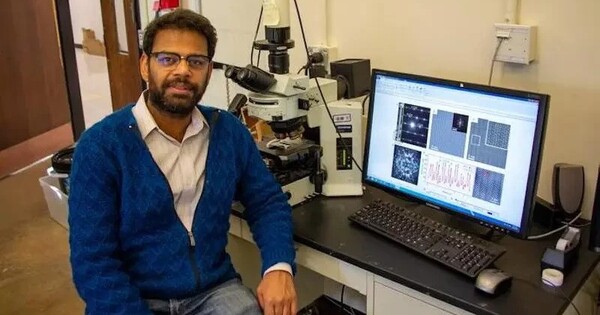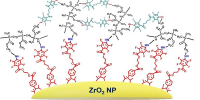Like sand grains on a beach, the atoms that make up amorphous substances like glass are haphazardly arranged and lack an organized structure. Amorphization, the process of turning materials amorphous, typically takes a significant amount of energy. To prevent atoms from organizing themselves in a crystal lattice, the most popular method is the melt-quench procedure, which entails heating a substance until it liquefies and then quickly chilling it.
According to a new paper published in Nature, scientists from the Massachusetts Institute of Technology (MIT), the Indian Institute of Science (IISc), and the University of Pennsylvania School of Engineering and Applied Science (Penn Engineering) have created a new technique for amorphizing at least one material—wires composed of indium selenide, or In2Se3—that requires as little as one billion times less power density. Phase-change memory (PCM) is a promising memory technology that has the potential to revolutionize data storage in devices ranging from computers to cell phones. This development could open up new possibilities for PCM.
In PCM, the material alternates between amorphous and crystalline phases, acting as an on/off switch to retain information. On the other hand, the enormous power required to produce these changes has prevented widespread commercialization. Agarwal, a senior author on the work and the Srinivasa Ramanujan Distinguished Scholar and Professor in Materials Science and Engineering (MSE) at Penn Engineering, explains, “The energy required is one of the reasons why phase-change memory devices haven’t reached widespread use.”
The energy required is one of the reasons why phase-change memory devices haven’t reached widespread use. Over the past few years we have developed a suite of in situ microscopy tools here at IISc. It was time to put them to test — we had to look very, very carefully to understand this process.
Dr. Agarwal
When Agarwal’s group discovered in 2012 that electrical pulses may amorphize germanium, antimony, and tellurium alloys without melting the material, they began researching alternatives to the melt-quench technique for over ten years.
Several years ago, as part of those efforts, one of the new paper’s first authors, Gaurav Modi, then a doctoral student in MSE at Penn Engineering, began experimenting with indium selenide, a semiconductor with several unusual properties: it is ferroelectric, meaning it can spontaneously polarize, and piezoelectric, meaning that mechanical stress causes it to generate an electric charge and, conversely, that an electric charge deforms the material.
Modi discovered the new method essentially by accident. He was running a current through In2Se3 wires when they suddenly stopped conducting electricity. Upon closer examination, long stretches of the wires had amorphized. “This was extremely unusual,” says Modi. “I actually thought I might have damaged the wires. Normally, you would need electrical pulses to induce any kind of amorphization, and here a continuous current had disrupted the crystalline structure, which shouldn’t have happened.”
Untangling that mystery took the better part of three years. Agarwal shipped samples of the wires to one of his former graduate students, Pavan Nukala, now an Assistant Professor at IISc and member of the school’s Centre for Nano Science and Engineering (CeNSE) and one of the paper’s other senior authors. “Over the past few years we have developed a suite of in situ microscopy tools here at IISc. It was time to put them to test — we had to look very, very carefully to understand this process,” says Nukala. “We learned that multiple properties of In2Se3 — the 2D aspect, the ferroelectricity and the piezoelectricity — all come together to design this ultralow energy pathway for amorphization through shocks.”
In the end, the scientists discovered that the mechanism is similar to both an earthquake and an avalanche. As electric current deforms the In2Se3 wires, little parts, measured in billionths of a meter, initially start to amorphize. Like the delicate shifting of snow at the top of a mountain, the current pushes parts of these layers into unstable places because of the wires’ layered structure and piezoelectric characteristics.
This action causes a quick spread of distortion across the wire when a critical point is reached. Similar to how seismic waves pass through the earth’s crust during an earthquake, the deformed regions meet to produce a sound wave that travels through the material.
Similar to an avalanche gaining pace down a hillside, this sound wave, scientifically referred to as a “acoustic jerk,” causes further distortion, connecting multiple tiny amorphous patches into a single one that is measured in micrometers and hundreds of times larger than the original areas. Shubham Parate, a PhD student at IISc and co-first author of the paper, adds, “Seeing all these phenomena interacting across different length scales at once is just goosebump stuff.”
Future discoveries will benefit greatly from the cooperative effort to comprehend the process. When all of these characteristics combine, a new area of study on the structural changes that can occur in a material is created. These findings have enormous promise for creating low-power memory devices, according to Agarwal.
















